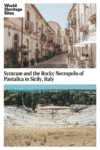Syracuse and the Rocky Necropolis of Pantalica
By Samantha
What is Syracuse and the Rocky Necropolis of Pantalica?
Syracuse (Siracusa in Italian) is located on the southeastern coast of the island of Sicily. Dating back to the 8th century BCE, the thriving Mediterranean city has over 3000 years of history, with many of its ruins proudly displayed for visitors to see.
Disclosure: This article contains affiliate links. Making a purchase through an affiliate link will mean a small commission for this website. This will not affect your price. Privacy policy.
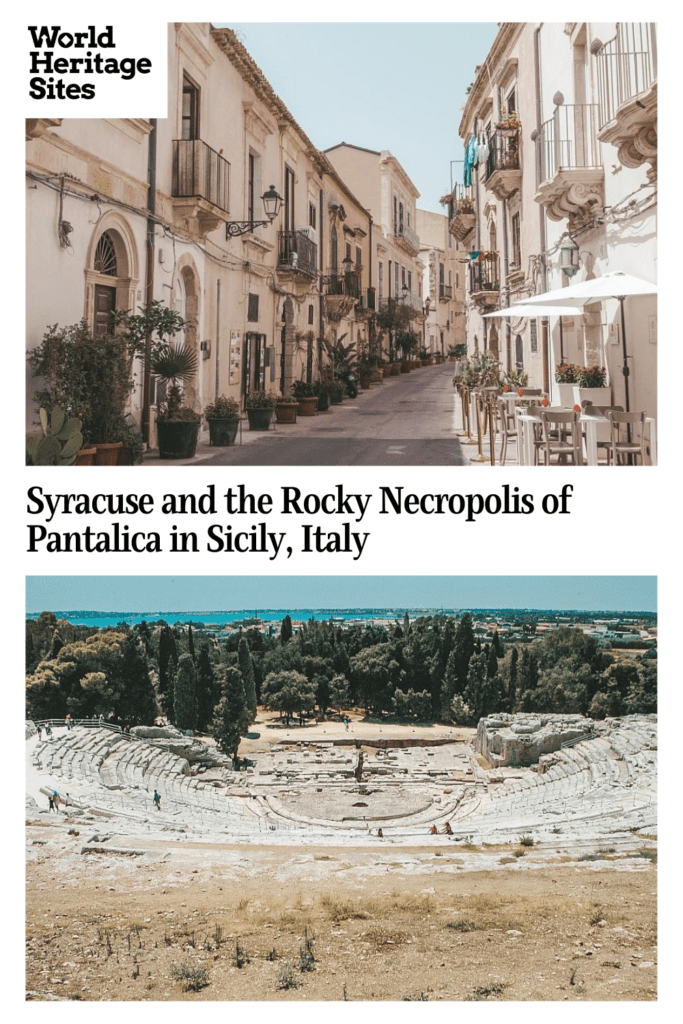
The UNESCO World Heritage Site covers two distinctively different areas. The first is the historic and charming old town of Syracuse, which can be found on the island of Ortygia, and the ancient archeological area of the Neapolis that is located just a short distance away. The second is the historic Necropolis of Pantalica, which showcases a series of ancient tombs carved into the mountain side. The Necropolis is just under a one-hour drive (40km or 25mi) from the city.
Why are Syracuse and the Necropolis a UNESCO site?
Syracuse’s history dates back as far as 734 BCE. Under Greek rule, the city grew quickly and fast became one of the most important cities of Magna Graecia. Throughout the centuries, numerous colonies conquered the island, from the Romans to the Byzantines, Argons, Normans and more, all of whom left their marks in forms of architecture and monuments in Syracuse. For this reason, Syracuse is a unique melting pot of all these different eras and Mediterranean cultures and, according to UNESCO, “an exceptional testimony to the development of civilizations over three millennia.”
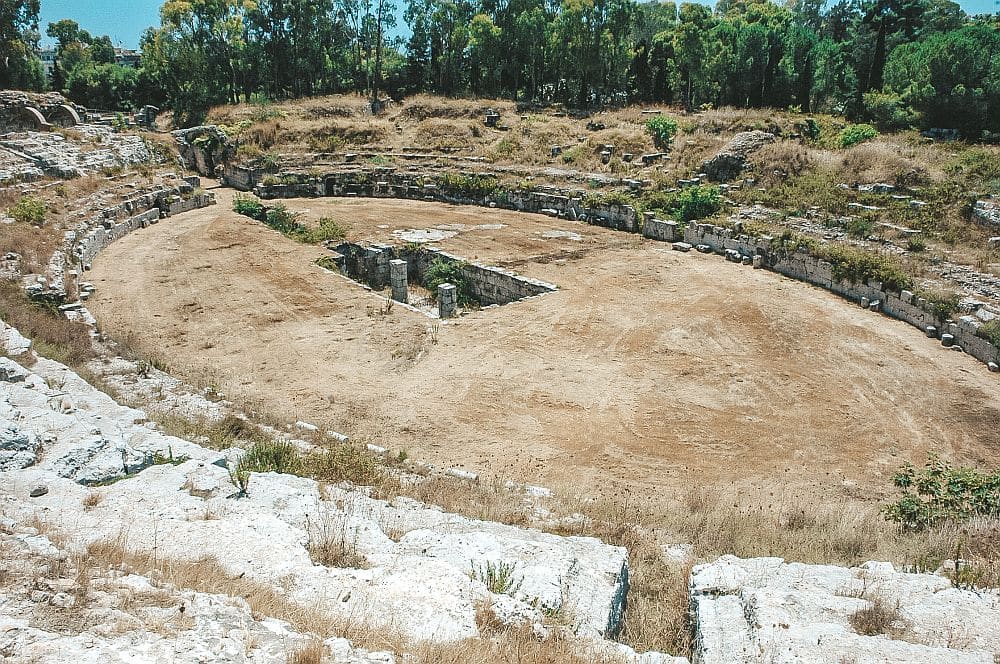
What can you expect when you visit Syracuse?
There are two separate sites to visit, the historic centre of Syracuse and the Necropolis of Pantalica. Since they are situated 40 kilometres from each other, it is not advised to try and see them both on the same day unless you are on a flying visit and limit your time in Syracuse.
Book accommodations in Syracuse.
Syracuse and the Neapolis
The island of Ortygia is where the origins of Syracuse can be found. These days it is an affluent neighbourhood where you’ll find a plethora of restaurants, bars and boutique shops. Here in the “historic old town” is where you will find the Temple of Apollo, the Fountain of Arethusa and the remains of the Temple of Athena that dates back to the 5th century BC and was later built into the cathedral that can be found on the main piazza.
The Neapolis archaeological site is in the city, just a few kilometres away. Here you will find the remains of several monuments including the large Greek theatre, a Roman amphitheatre and the Ear of Dionysius (a large cave carved into a hill and originally used for water storage).
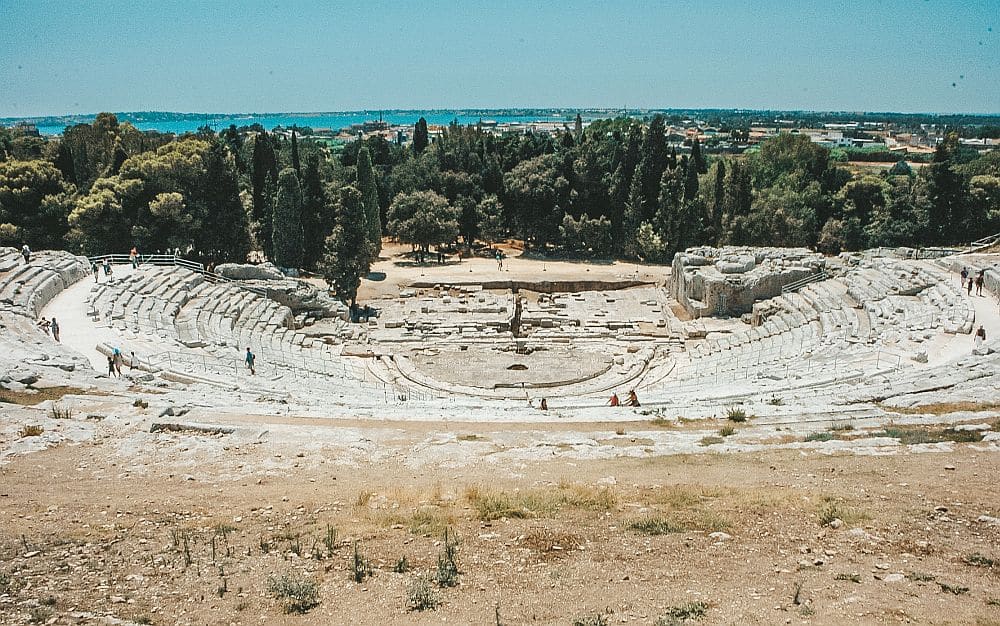
The Necropolis of Pantalica
To visit the Necropolis you will need to drive west inland for just under an hour. Despite being the second part of the UNESCO site listing for Syracuse, fewer people visit this site due to its remote location. The approximately 5000 tombs were carved into the rocky mountain side of a large gorge that was cut out by the River Anapo. The graves’ age ranges from as far back as the 13th century BCE to the 7th century BCE.
It is free to visit since it is located in a nature reserve, but it does require some walking to reach the tombs.
Some of the artifacts excavated from tombs – most were emptied long ago – are viewable at the Paolo Orsi Archaeological Museum in Syracuse.
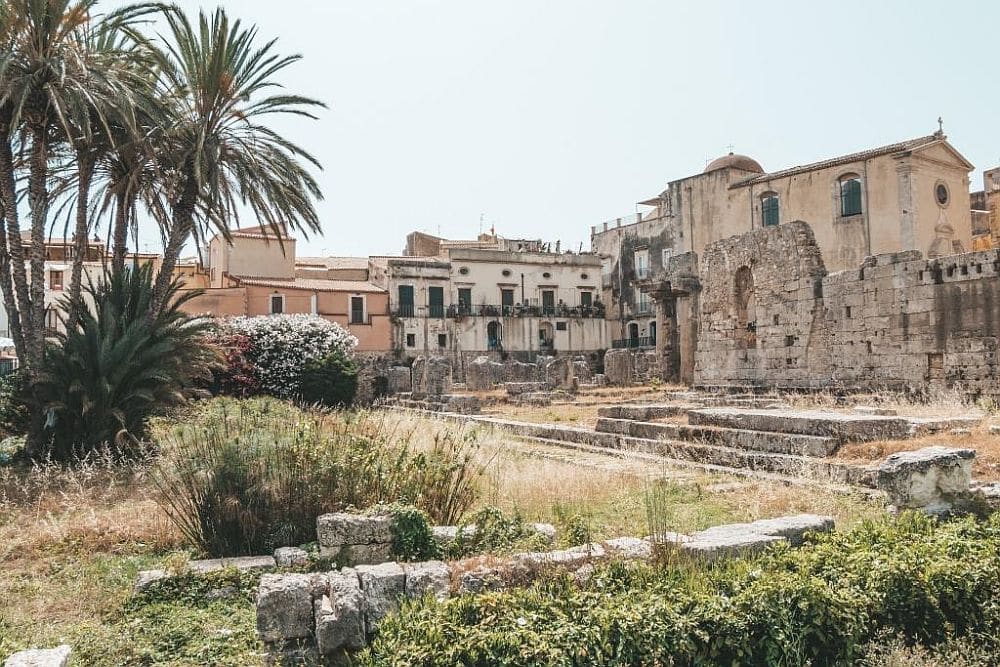
Are Syracuse and the Necropolis worth visiting?
Exploring the historic centre of Syracuse is one of the best things to do in Sicily; it’s a site that shouldn’t be missed. Syracuse is a fantastic city to base yourself for sightseeing in eastern Sicily so it would be a shame to not visit the UNESCO site itself.
The Necropolis of Pantalica, however, is quite off the beaten track and only worth making the trip if you have plenty of time in Sicily. While it is an impressive archaeological site, its remote location, lack of tourist facilities and the necessary walking to reach the tombs can make it difficult for older travelers and those with children.
What sort of travellers would like Syracuse?
Anyone visiting the island will surely not want to miss visiting Syracuse. It is one of the main cities on the island and home to many of Sicily’s top sights. History lovers will be in paradise here as well as those who simply enjoy visiting ancient sights. People who enjoy hiking and nature will enjoy visiting the Rocky Necropolis as it is home to some beautiful flora and fauna and local wildlife. Both sites are family-friendly, although families with smaller children will want to spread out the explorations over two days to avoid tiring out the children, especially in the hot summer months. You should prepare accordingly if you plan on visiting the tombs at Necropolis as the paths are not stroller friendly and it is a long walk for little legs.
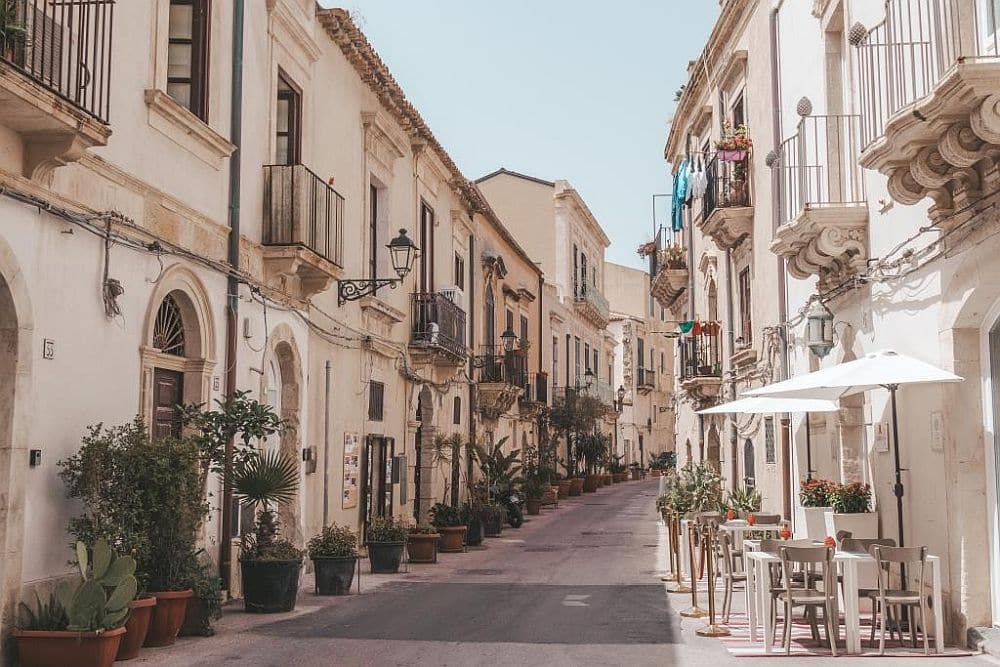
Tips for visiting Syracuse
The Archaeological Neapolis area in Syracuse is mostly open to the elements and as such, the hot sun during the summer months. It is highly advised to wear sun screen, a hat, bring plenty of water and wear sunglasses as the reflection off the limestone can be quite strong. There is limited shade and temperatures can reach as high as 40°C (104°F) so visitors should be prepared.
Ortygia is best visited from the late afternoon when the island comes to life. You can enjoy an aperitivo by the water and watch the sun set before an evening stroll around all the small streets with an ice cream.
Sturdy closed shoes should be worn for anyone attempting to visit the Necropolis of Pantalica.
If heading to the Necropolis, plan your visit to avoid the midday sun during the summer months. There are no shops on site to buy water, so bring everything you need with you.
Reach the Necropolis from the town of Ferla for a relatively easy walk and from Sortina for a longer “hike” through the nature reserve.
Take a small-group guided hike to the Necropolis.
Where is it?
The centre of Ortygia is Piazza Emanuele Pancali.
The archaeological Neapolis is at Via Luigi Bernabò Brea, 96100 Siracusa SR, Italy.
The Necropolis of Pantalica is near Sortino SR, Italy.
By Car: There is parking available outside the main archaeological site in Syracuse, right next to the ticket office. To visit Ortygia, be aware that a limited traffic zone (ZTL) applies to the island and when it is active you cannot enter with a car. You are therefore limited to parking nearby on the streets across the bridge or in the parking lot to the left after you cross the bridge or in the marina. Both are paid parking with an app called Easypark.
By Public Transport: Syracuse can be reached by train from Catania and Palermo as well as by bus from some smaller towns. Most buses terminate at Syracuse’s main train station. From there you can take a taxi or walk to both of the historic sites in the city. Unfortunately, it is not possible to visit the tombs in the Necropolis with public transport.
For more information on Syracuse’s archaeological park, including opening hours and online ticket purchase, you can visit this website (in Italian – use Google translate).
Have you been to Syracuse and/or the Necropolis? If so, do you have any additional information or advice about this UNESCO World Heritage site? Please add your comments below!

